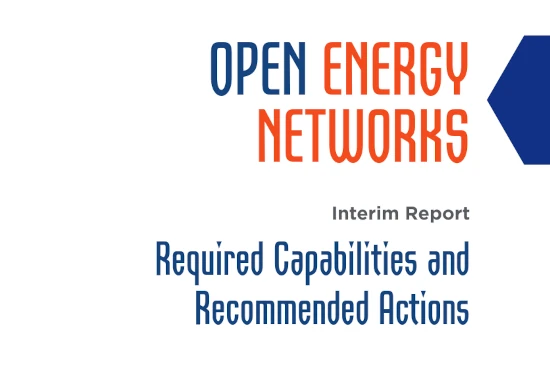The two-way electricity grid, Distribution Service Operators (DSO) and aggregators are coming to Australian energy markets – policy makers and consumers need to be aware of the opportunities and risks in reform.
by Jeremy Buckingham
The Problem
The speed and magnitude of solar PV investment is growing exponentially across Australia. According to the Clean Energy Regulator installed PV capacity reached 1GW in 2018 and continues to grow driven by the commercial sector. New rooftop PV systems in this market tripled from 2016 to 2017.
This skyrocketing growth of unregulated distributed energy resources in the National Electricity market (NEM) has firstly created an urgent need for grid architecture to solve the technical and grid stability issues for operators of transmission networks, and secondly created an expectation by consumers that the operation of the energy market will evolve to allow them, through wholesale service aggregators, to derive significant additional value from their DER. The CSIRO found that the optimisation of DER could lower electricity prices for all consumers, including non-DER owners by up to $414 per annum by 2050.
Change is happening
Technological and regulatory change is happening and happening quickly. The value and ROI on PV, battery storage and electric vehicles could be significantly improved or harmed if government’s and organisations make the wrong strategic calls now. Consumers and policy makers are increasingly aware of the emergence and potential benefits of VPP’s, local energy markets and Microgrids but they need to know how the change is being driven so as to position themselves and their communities to benefit.
To deal with these issues in Australia a plethora of processes and research is underway. Of note is the work of AEMO and Energy Networks Australia who teamed up in 2018 to create the Open Energy Networks Project consultation. The ongoing project is investigating how best to transition to a two-way electricity grid and marketplace, which increases visibility of energy usage whilst optimising the integration and management of DER. A key development of this process was the identified need for a new energy market participant, the Distribution Service Operator (DSO) linking Distribution Network Service Provider (DNSP) with future DER aggregators and consumers/sellers.
As part of this process AEMO and ENA identified and investigated three conceptual models including a new DSO entity participating in energy networks and markets. This process included an international review of the approach in jurisdictions undertaking a similar process, an assessment of Smart Grid Architecture Models (SGAM) to enable DSO function, and a cost benefit analysis of optimising DER integration in Australia.
Hybrid model
The outcome of consultation process was the development of a favoured ‘hybrid model’ which will be assessed with the original three by global industry consultants Baringa. The independent DSO was seen to be overly complex, and there was a perceived conflict of interest in the DNSP maintaining a technical operation role as well as a market clearing function. Managing the market and the system at the transmission and distribution level was considered a lot to manage for one organisation in the single integrated platform.
In the ‘hybrid model’, it is envisaged that the DNSP maintains a technical DSO function – managing and communicating distribution network constraints whilst AEMO manages a market platform that optimises all DER bids for wholesale, Frequency Control Ancillary Services (FCAS), network services and other identified market services.
DSO and DER markets
In this model the DSO provided DER markets and aggregators with static operating envelopes based upon the technical capability forecast to accommodate DER dispatch. The DSO assesses market bids and network constraints to generate dynamic operating envelopes for DER which respect distribution network constraints that in turn inform their technical and commercial offering to the markets.
Importantly to facilitate this new DSO role and a two way grid the Open Energy Networks report identified that “all future scenarios indicate the involvement of third parties in a variety of roles interacting with the grid in real time”, and that this functionality “requires real time access to monitoring data, giving rise to the requirement for a cheap, reliable and open data, monitoring and communications platform”.
The opportunities of an optimised two-way grid are enormous and could greatly benefit consumers and our efforts to decarbonise our energy systems. The efficacy of the models being tested, and ultimately operated by AEMO, are incredibly important to the productivity and sustainability of Australia going forward. The Productivity Commission (PC), Finkel Review, Australian Competition and Consumer Commission (ACCC) and Energy Security Board (ESB) have all recognized the essential role of open, real time data platforms in the successful integration of DER and reform of the National Electricity Market (NEM).
Advancements in data science and information technology have made federated, scalable data platforms available. These data platforms can ingest, analyse and respond to diverse datasets such as energy, socioeconomic, environmental and temporal geo-spatial information. Purpose built programs and algorithms can now provide two-way communications and operational control over entire energy networks - in real time. This is has been recognised and tested in this ARENA research by the UTS Institute for Sustainable Futures .
Much of the benefit of a reformed energy grid depends on energy data architecture that is made available for innovation and new services. Buildings Evolved believes that the models being tested and standards for edge devices may risk rail gauge issues and may create or entrench data sloes that are not in the interest of consumers or productivity. Australia has a chance to get this right and we should hasten slowly into a new regime if it risks locking in inefficient and outmoded models that limit services and the benefit of the renewable energy revolution.

